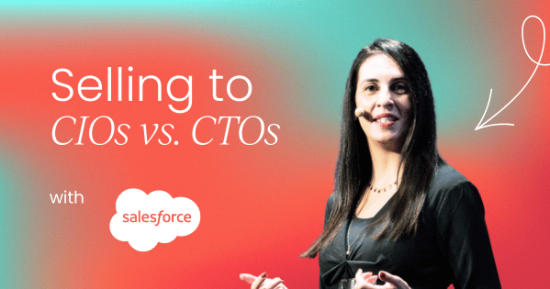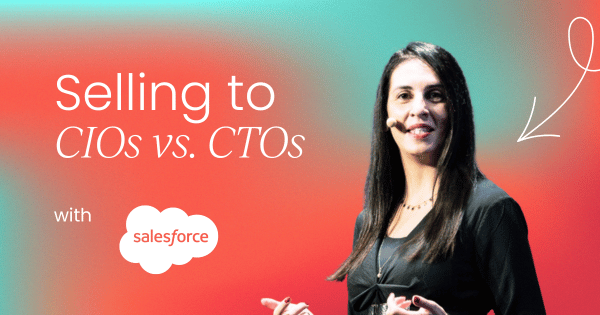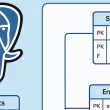It’s no secret anymore: product marketing is not a one-size-fits-all discipline. Nowhere is that more evident than when you’re selling to the C-suite.
On the org chart, the Chief Information Officer (CIO) and Chief Technology Officer (CTO) might appear side by side, but in reality, they look at the world through entirely different lenses. They speak different languages, steer toward different priorities, and respond to different forms of value.
So, if you’re not tailoring your message accordingly, you’re not just missing the mark – you’re sailing off course.
Two roles, two rhythms
While both CIOs and CTOs operate at the helm of technology leadership, they sail in different directions when it comes to priorities and perspectives. One steers toward business alignment and strategic impact, the other toward engineering excellence and technical scalability.
Let’s take a closer look at each role.
The CIO’s role today
The role of the CIO is undergoing a seismic shift. They are no longer just technology managers; they are key business drivers. In fact, Foundry’s 2024 State of the CIO report found that 81% of CIOs agree that “the CIO is becoming a changemaker, increasingly leading business and technology initiatives”.
Additionally, 50% of CIOs identify as business leaders, proactively shaping technology decisions to drive business outcomes. As the report states, “CIOs are widely recognized as key business drivers, not just technology managers”.
It’s getting clearer and clearer that the CIO’s world revolves more and more around business alignment, CIOs are gaining strategic influence, and bigger budgets to match. CIOs are scanning the horizon, asking:
- Will this drive efficiency?
- Solve real business problems?
- Support AI transformation at scale?
They’re measured by their ability to align IT strategy with business goals, manage operational risk, and deliver tangible ROI amidst staff and skill shortages. They think in terms of transformation roadmaps, cost optimization, resource utilization, and stakeholder impact through innovative AI technologies.
Take, for example, the CIO of a global healthcare organization investing heavily in AI-driven diagnostic tools. Their primary focus is on how technology improves patient outcomes while complying with complex regulatory frameworks across multiple countries. They need solutions that integrate smoothly into existing systems, reduce operational overhead, and ultimately demonstrate measurable improvements in healthcare delivery and cost control.
Similarly, a CIO at a leading international retail corporation is deeply invested in leveraging AI and data analytics to optimize inventory and personalize customer experiences across thousands of stores and online platforms worldwide. Their messaging expectations center on how your solution accelerates omnichannel transformation and increases customer lifetime value while safeguarding data privacy.
The role of a CTO
The CTO, on the other hand, is fluent in the language of engineering. Their compass points toward scalability, system integrity, and speed of innovation. Their questions are sharper:
- Will this integrate cleanly?
- Scale quickly?
- Keep us ahead of the curve?
They are architects of capability, scanning for friction, future-proofing tech stacks, and watching for the next big leap.
Consider the CTO of a mid-market fintech company that operates a rapidly expanding payment platform handling billions of transactions monthly. Their focus is on architectural agility, API robustness, and security compliance at scale, demanding granular details on product roadmaps, performance metrics, and how the technology future-proofs their platform.
Or think about the CTO in a heavy manufacturing firm embracing IoT and edge computing for predictive maintenance. They want to understand how your solution integrates with operational technology systems, ensures real-time data accuracy, and addresses cybersecurity challenges unique to industrial environments.
This is why, as product marketing strategists, it’s worth asking: Are we adapting our story to fit their distinct perspectives or just defaulting to the familiar?
Shifting the sails: How product marketers navigate the difference
For a strategic product marketer, understanding the difference isn’t optional. Great product marketers don’t cling to a fixed course. They read the winds, adjust the sails, and match their message to the moment.
Appealing to CIOs’ priorities
When speaking with a CIO, the conversation naturally orbits around strategy and innovation. They care about business outcomes: from AI and digital transformation to efficiency gains, to cost control and revenue growth.
What matters is whether your product moves the needle at the organizational level. It’s not just about what the technology does, but how clearly you can connect it to their broader goals. Demonstrating ROI isn’t a closing argument; it’s where the dialogue begins.
In practice, this could mean articulating how your product enables a digital wallet provider to expand securely into new markets, ensuring compliance with local financial regulations while reducing fraud and operational friction.
Or, when engaging with a CIO of a global retail giant, you frame your solution as a catalyst for enhancing customer engagement through AI-driven personalization that measurably increases customer satisfaction and repeat purchases, boosting long-term loyalty.
Appealing to CTOs’ priorities
With a CTO, the dynamic shifts. Precision becomes the currency of trust. They’re listening for integration details, architectural implications, and how your solution performs under pressure.
Vague narratives fall flat. You’re expected to bring clarity, depth, and evidence – from the product roadmap to performance benchmarks – and to show exactly where your solution fits into their broader technical ecosystem.
For example, when presenting to a CTO at a hyperscaling fintech payments platform, demonstrate how your API architecture supports seamless scalability, maintains security certifications critical for compliance standards, and integrates effortlessly to accelerate feature deployment.
Similarly, a CTO in a supply chain-heavy manufacturing company will focus on how your solution interfaces with legacy systems, supports edge analytics, and addresses cyber resilience to prevent operational disruption.
Know the waters you’re in
Scale influences tone and focus. Adjusting your message by persona is only half the equation. Scale matters too. And the scale of the organization shapes not just what you say, but how that message needs to land.
Tailoring your message to small businesses
In smaller companies, clarity and speed often win the day. Simplicity is expected by default, and solutions need to be easy to adopt, quick to show value, and mindful of cost constraints. Imagine a growing mid-market retailer seeking to optimize supply chain operations: the CIO wants to hear about rapid deployment, seamless integration with existing ERP systems, and flexible pricing models.
Tailoring your message to mid-market businesses
As you move into the mid-market fintech space, where companies are often in hyperscaling mode, the conversation starts to shift. These organizations require flexibility, tools that integrate well, evolve with them, and don’t lock them into rigid frameworks. Their CTOs demand evidence of how your solution supports rapid feature iteration, strong security posture, and cloud-native architectures that adapt to increasing transaction volumes globally.
Tailoring your message to enterprises
At the enterprise level, the stakes and scrutiny rise sharply. Every single interaction must project credibility – not just in what you say, but in how you’re perceived in the broader ecosystem. Enterprise buyers are listening for signals: security, scalability, compliance, ecosystem fit, and the ability to align with a complex network of stakeholders.
Take the example of a CIO leading digital transformation in a multinational healthcare provider. They expect you to address specific compliance regimes explicitly, backed by certifications and documented success stories. Similarly, a CTO at a global retailer will weigh in heavily on your product’s ability to integrate with legacy systems and emerging AI tools, with a clear roadmap for scalability and interoperability.
Your reputation in the market, from customer references to analyst recognition from firms like Gartner and Forrester, becomes a large part of the buying criteria. It isn’t just a logo on a slide; it influences perception, priorities, and the shortlist itself.
Navigating these layers requires understanding context deeply and adapting your approach with the same nuance you expect from your product itself.
Sailing in crosswinds: The real skill of a product marketer
The best product marketers aren’t thrown off by conflicting winds. They know how to tackle long-term business strategy and immediate technical priorities. They stay steady even when the brief shifts mid-conversation, because they understand the broader map.
One moment, you’re framing a transformation narrative for a CIO looking to modernize an aging stack. The next, you’re detailing your API architecture for a CTO benchmarking performance at scale. You move between these conversations with intent, not improvisation.
That’s where real product marketing leadership lives – not in the deck of slides, but in the ability to steer the message with clarity, control, and context.
Bridging storytelling and growth
Product marketing means influencing decisions, aligning visions, and moving organizations forward.
It’s critical to leave space for your clients to tell your product’s story in their own words. Empowering their teams to share authentic success stories – whether it’s a digital wallet provider demonstrating enhanced user adoption through your compliance tools, or a big healthcare company showcasing AI-driven improvements in patient diagnostics – builds credibility that no slide deck alone can achieve.
Speaking the right language to the right leader is the best way not only to earn attention, but also to earn trust. And trust, in the enterprise, is the engine of growth.
Great product marketers know how to navigate complexity, steer conversations and move the whole crew.
And you?
How are you adapting your messaging across the C-suite? Drop your favorite tactics or your hardest challenges in the comments. Let’s have the conversation product marketers really need to successfully bring both CIO and CTO aboard.






